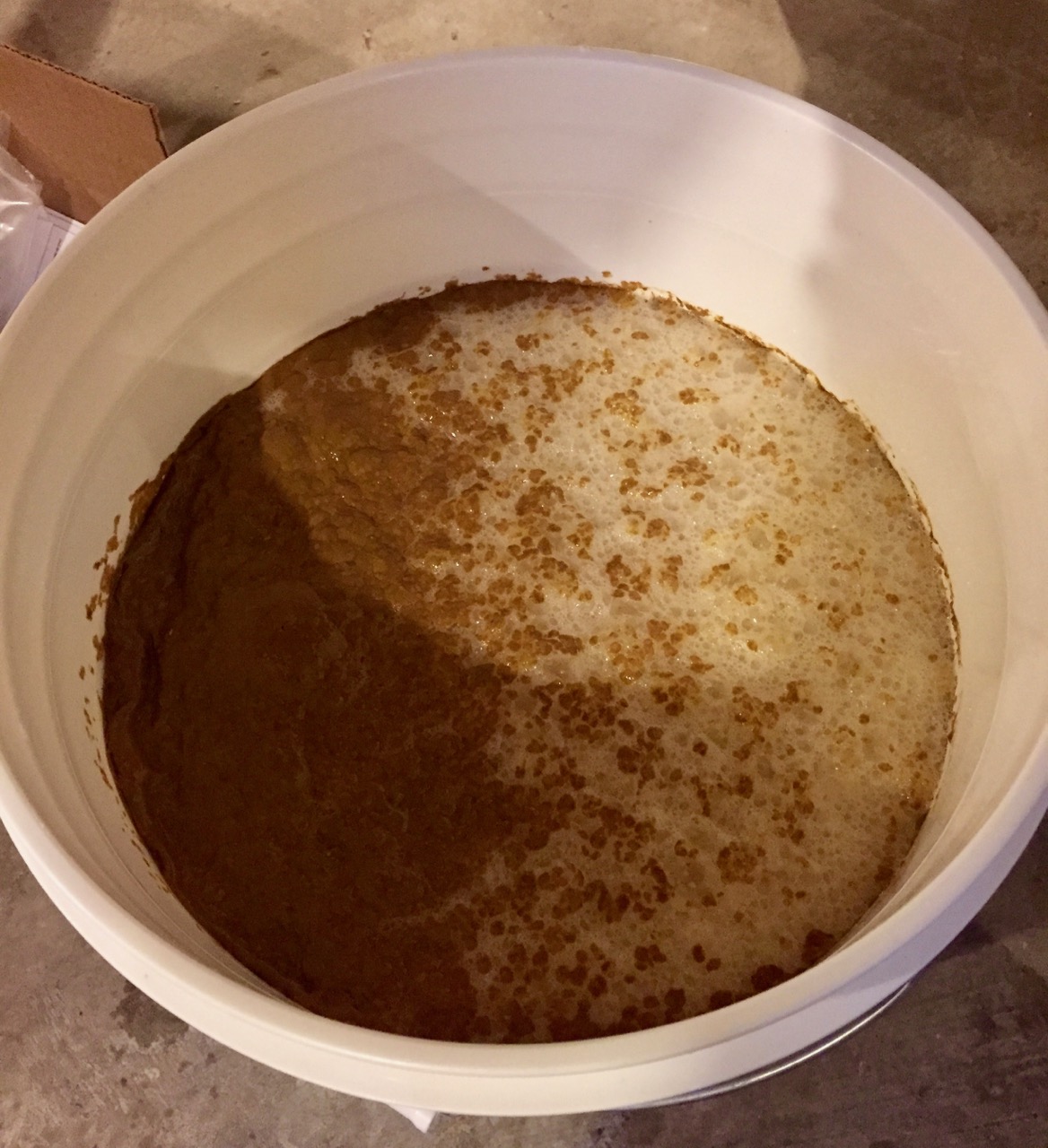cpayne1710
New Member
- Joined
- Dec 27, 2016
- Messages
- 2
- Reaction score
- 1
Hello all,
I'm quite new to the forum but I've been lurking around for a couple weeks. I'm also new to home brewing. I have 7-8 extract brews under my belt. This past Friday I made two batches. One was an all-grain (that's another post altogether) and one was an American Wheat extract kit from Northern Brewer.
I've had good success so far with my fermentations. I typically see activity in the airlock within 24 hours. I've only used dry yeast so far and after my second batch I have always re-hydrated the yeast by boiling water, letting it cool, pitching the yeast, let it sit for 15 minutes then pitch into wort. I recently read an article that said, to save some time doing rehydration, scoop out some boiling wort, let it cool, pitch your yeast into this "sample", let it rest then pitch into your fermentor with the wort. This is how I rehydrated my yeast for this batch.
- Pulled some boiling wort with 30 minutes left in the boil
- Put the sample wort into the freezer to cool, pulled it out of the freezer at flame out, let it sit at room temp for another 45 mins or so as I cooled the wort with immersion chiller to ~80*.
- Pitched the yeast into the sample, transferred wort to fermentor, aerated the wort by sloshing it around in the bucket for a few minutes (my standard aeration practice).
- Pitched re-hydrated yeast into fermentor (wort already in the bucket)
I checked on the fermentor after 24 hours...no activity in airlock. I checked again at 36 hours...no activity in airlock. I decided to pull the lid to see if krausen had formed. There does seem to be krausen.
I usually take really good notes but toward the end of this batch I was in a hurry and I do not have a temp written down for when I pitched the yeast in the sample or for the temp of the wort for when I poured the yeast in. But, I would think after 30 mins in the freezer and 40 minutes at room temp the sample wort would not have been too hot for the yeast. I do have a temp (80*) for when I removed the immersion chiller so I know the temp of the wort going into the fermentor was less than 80*.
Am I just being paranoid that there is no airlock activity? The bucket has a good seal.
I have an OG of 1.042 so my plan is to take another gravity reading in a day or two to see if it has decreased. The lack of activity in the airlock is really throwing me off.

I'm quite new to the forum but I've been lurking around for a couple weeks. I'm also new to home brewing. I have 7-8 extract brews under my belt. This past Friday I made two batches. One was an all-grain (that's another post altogether) and one was an American Wheat extract kit from Northern Brewer.
I've had good success so far with my fermentations. I typically see activity in the airlock within 24 hours. I've only used dry yeast so far and after my second batch I have always re-hydrated the yeast by boiling water, letting it cool, pitching the yeast, let it sit for 15 minutes then pitch into wort. I recently read an article that said, to save some time doing rehydration, scoop out some boiling wort, let it cool, pitch your yeast into this "sample", let it rest then pitch into your fermentor with the wort. This is how I rehydrated my yeast for this batch.
- Pulled some boiling wort with 30 minutes left in the boil
- Put the sample wort into the freezer to cool, pulled it out of the freezer at flame out, let it sit at room temp for another 45 mins or so as I cooled the wort with immersion chiller to ~80*.
- Pitched the yeast into the sample, transferred wort to fermentor, aerated the wort by sloshing it around in the bucket for a few minutes (my standard aeration practice).
- Pitched re-hydrated yeast into fermentor (wort already in the bucket)
I checked on the fermentor after 24 hours...no activity in airlock. I checked again at 36 hours...no activity in airlock. I decided to pull the lid to see if krausen had formed. There does seem to be krausen.
I usually take really good notes but toward the end of this batch I was in a hurry and I do not have a temp written down for when I pitched the yeast in the sample or for the temp of the wort for when I poured the yeast in. But, I would think after 30 mins in the freezer and 40 minutes at room temp the sample wort would not have been too hot for the yeast. I do have a temp (80*) for when I removed the immersion chiller so I know the temp of the wort going into the fermentor was less than 80*.
Am I just being paranoid that there is no airlock activity? The bucket has a good seal.
I have an OG of 1.042 so my plan is to take another gravity reading in a day or two to see if it has decreased. The lack of activity in the airlock is really throwing me off.



